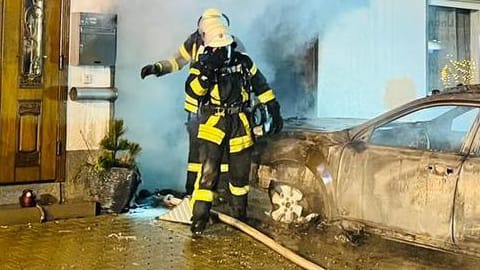Status: 11/21/2022 4:36 AM
Steam rises from the manhole covers: an image of New York familiar to many. Behind it is a rather outdated heating system.
The idea should not be missing in any New York movie: smoke rises in the canyons of Manhattan’s streets—sometimes through orange plastic chimneys, sometimes from a manhole cover. Generations of tourists have already racked their brains over what could be the reason. The answer is simple and old by American standards: a steam heating system in Manhattan’s underworld.
Steam heating also on the anniversary of September 11th
“The steam system was commissioned in March 1882, so we just celebrated our 140th anniversary,” says Frank Cuomo. “A few years ago, the system was invented in Lockport, New York State. Then this idea was implemented on a large scale with the expansion of New York City north from Battery Park.”
Cuomo is responsible for the steam heating system at New York energy supplier ConEdison. It is 170 kilometers long and supplies steam to about 1,600 buildings in the city for heating – up to three million people in an area of more than 460,000 square meters from the Empire State Building to the United Nations headquarters.
“If a tourist knows the name of a building, there’s a good chance it will supply steam as well. Because a lot of these buildings were built around the time the pipe system was built,” Cuomo said. The famous exception is the World Trade Center: “The old complex was already stocked with steam, and so was the new complex. From the towers to the water basins. There the water is heated with ConEdison steam so it doesn’t freeze in the winter.”
Steam in front of skyscrapers: Plumes like here on Fifth Avenue in Manhattan come from a 140-year-old New York steam underground heating system.
Photo: AFP
Only blackout brought the system to a halt
Only once in the 140-year history of New York’s evaporative heating system did the citywide system fail: in 2003 during a major power outage in the northeastern United States and Canada, when 55 million people were without power, some for days. But just about every day there are minor local failures in the rather dilapidated line system in the meantime. Then, smoke rises from the New York subway, Cuomo explains.
“There could be two reasons for this: first, a leak in the system that then has to be rectified, which can take a very long time. Or second, if our steam lines come into contact with water.” The steam lines are hot at more than 200°C. Then the wastewater or rainwater instantly evaporates and exits the street or sidewalk somewhere in the form of a cloud.
And then orange plastic stacks come into play, which – like many in the city – are considered “iconic” in marketing talk. They just have to make sure that pedestrians do not burn themselves and that the view of vehicular traffic is not obscured.
Old, but relatively environmentally friendly
But despite the weaknesses of the system, New York’s steam heating system is relatively environmentally friendly. 60 percent of the energy required is generated by waste heat from domestic power plants, as is the case with district heating in Germany. Only this steam is produced instead of hot water.
“The advantage is that no additional power is needed for the pump, as is the case with hot water,” Cuomo explains. “The steam goes directly to the customer’s site because of the pressure.” They can also be very tall skyscrapers. Steam reaches the upper floors without the need for additional power. Why Climate Defenders Invoke Regime’s Rise.
Someday hydrogen instead of steam?
But the gist of the matter is this: As long as steam in conventional power plants is generated with fossil fuels—in New York it’s 97 percent natural gas—a steam heating system won’t really be CO2-neutral either. Water vapor is difficult to generate using solar or wind energy.
And so Vijay Modi of Columbia University in New York supports another idea: “Perhaps it will be possible to convert large amounts of electricity from offshore wind farms off New York into hydrogen. Then we can use old steam pipelines to supply hydrogen to buildings for heating.” There are still a lot of unanswered technical questions, but: “At least you don’t have to build a new distribution system, you can use the old pipelines.”






